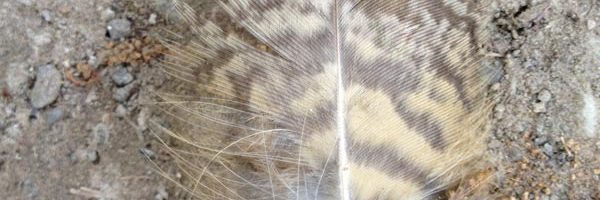Free Lesson Plan: Eagle Feathers & Wings
Title/ Description: Eagle Feathers and Wings
Level: Pre-K to Middle School
Duration: One 45-minute class period
Historical Overview: Students learn about the eagle as a symbol of the United States used on official American documents, currency, and the Great Seal of the United States. In the 18th century, when the seal was created, it was believed the bald eagle only lived in the U.S. The bald eagle on the Great Seal of the United States is surrounded by other powerful symbols. In his talons, the eagle holds a quiver of arrows and an olive branch, representing war and peace.
The shield on the eagle is red, white, and blue, from the American flag. White signifies purity and innocence, red signifies hardiness and valor, and blue signifies vigilance, perseverance, and justice. The shield, or escutcheon, which is held by the eagle without assistance, demonstrates that the American states “ought to rely on their own virtue,” according to the State Department.
The number 13 also appears on the seal several times, as it has 13 stars above the eagle’s head, arranged in a constellation signifying a new nation taking its place among the other countries in the world, 13 stripes on the shield and 13 arrows, all representative of the original 13 colonies.
Students also learn that, among the Lakota Indigenous Peoples in the Americas, the eagle is seen as the strongest and bravest of all birds and its feathers are highly valued. The Lakota treat eagle feathers with great respect and are consider them holy. Eagle feathers are given to others in honor and are worn with dignity and pride. When an eagle feather is held over someone’s head, it means the person is brave or is wished bravery and happiness. To wave it over everyone present means everyone is wished peace, prosperity, and happiness. When an eagle feather is dropped during a powwow, a specific ceremony is performed to pick it up and the owner is careful to never drop it again.
Goals and Objectives: We created this project to welcome immigrant youths. Students learn about the eagle, a formerly endangered bird whose protection and conservation efforts have been successful in the United States and an important symbol for the Lakota Indigenous Peoples in the Americas. Students also learn how to cut both sides of a feather simultaneously using the principles of symmetry.
Vocabulary: Feathers, wings, tail, talons, eagle, white, black, symbol, Indigenous Peoples in the Americas, prosperity, bravery, dignity, pride, immigrants, passport, great seal, symmetry, collaboration, powwow
Materials: Butcher paper, tape, markers, colored pencils, scissors, white paper
Procedures:
Day 1
- Prep – cut butcher paper into wings.
- Fold the white paper in half.
- Draw half of a feather.
- Cut away from folded edge.
- Unfold, draw center quill, and add additional lines.
- Color and decorate.
- Have students wave feathers above their heads to perform a blessing ceremony.
- Tape feathers onto butcher paper wings.
- Students pose for photos in front of completed wings.

